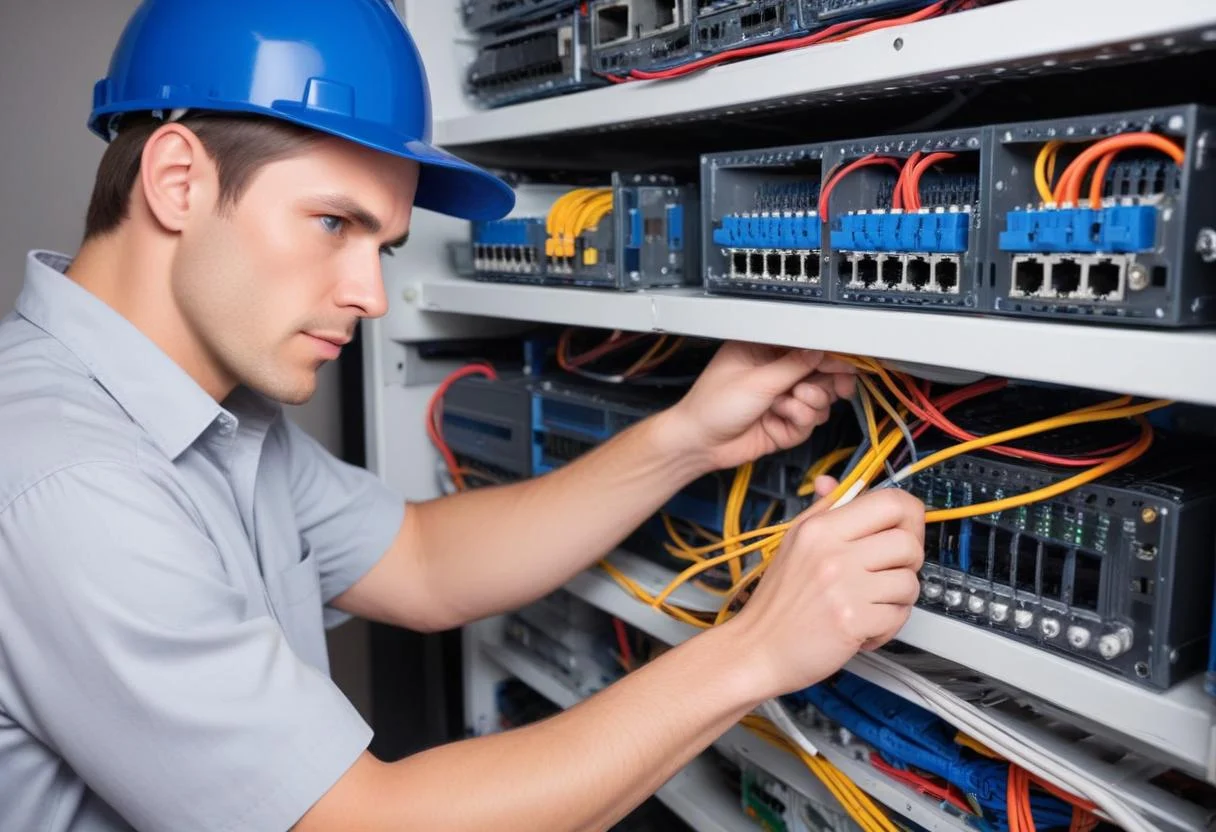Ethernet Cable Management Tips
Effective Ethernet cable management is crucial for maintaining an organized, efficient, and safe network infrastructure.
Created by: Daniel Ogunsemowo /
Vetted by:
Otse Amorighoye

Effective Ethernet cable management is crucial for maintaining an organized, efficient, and safe network infrastructure, especially in environments with numerous connected devices like data centers, offices, or home setups. Good cable management not only enhances the aesthetics but also improves the performance and longevity of the hardware. Proper cable management leads to enhanced network reliability, easier maintenance, and improved system performance. Here are essential tips and techniques for managing Ethernet cables: Before installing cables, plan the layout according to the network's needs. Consider the number of devices, their locations, and the best routes for cables to minimize lengths and avoid clutter. Use a floor plan or diagram to map out cable paths and network components. This helps in avoiding common issues in data network cabling. Using Ethernet cables of the appropriate length reduces excess that needs to be coiled or managed additionally. Excess cable can lead to tangled messes and degrade network performance due to electromagnetic interference from tightly coiled bundles. Learn more about the steps for data network cabling installation. Implement a color-coding system for different types of connections. For example, use different colored cables for different departments, data speeds (e.g., blue for 10 Gbps connections, green for 1 Gbps), or types of devices. This makes it easier to identify and troubleshoot connections and aligns with best practices for structured cabling design. Label both ends of each Ethernet cable with information about its purpose and destination. This practice saves time during troubleshooting and maintenance by quickly identifying the connection points without needing to trace cables manually. Learn the basics of network cable installation. Cable organizers such as racks, hooks, clips, and ties are invaluable for keeping cables neatly aligned and secured. Vertical and horizontal cable managers in racks help guide cables neatly to and from patch panels and network equipment. Using structured data cabling system tips can further improve this process. Cable trays and overhead ducts provide a neat and organized pathway for running large bundles of cables over longer distances, especially in data centers or across different floors of a building. Velcro ties are preferable to zip ties for bundling cables. Zip ties can overly compress cables, potentially damaging the wires inside or making future adjustments difficult. Velcro ties are gentler and reusable, allowing for easy adjustments as the network grows. Regularly check and maintain cable organization. This includes removing unused cables, replacing damaged ones, and re-securing loose bundles. Periodic audits of the cable management system help ensure ongoing compliance with best practices. Preventive maintenance checklists can be useful for keeping track of tasks. Patch panels are essential for managing incoming and outgoing Ethernet cables in a centralized location. They allow for easy changes to be made without disrupting the entire network setup. They also reduce wear and tear on equipment by limiting the number of times cables need to be plugged in and unplugged directly from devices. Proper cable management helps maintain good airflow around network equipment. This prevents overheating, which can reduce the performance and lifespan of hardware. Ensure that cable arrangements do not block vents or cooling fans. Consider the benefits of structured cabling to optimize your setup. Effective Ethernet cable management is not just about cleanliness; it enhances network reliability, makes maintenance easier, and can significantly impact system performance. Investing time and resources in proper cable management practices pays off with fewer network issues and easier upgrades in the future. Proper Ethernet cable management improves network reliability, enhances performance, and makes maintenance easier. Use a floor plan or diagram to map out cable paths and network components, considering the number of devices and their locations. Velcro ties are gentler and reusable, allowing for easy adjustments as the network grows, while zip ties can damage cables and make adjustments difficult. Regular checks and periodic audits should be performed to ensure ongoing compliance with best practices, removing unused cables and re-securing loose bundles. Patch panels centralize the management of incoming and outgoing Ethernet cables, allowing for easy changes and reducing wear and tear on equipment.Benefits of Effective Ethernet Cable Management
Planning Your Layout
Importance of a Well-Thought-Out Layout
Choosing the Right Length
The Impact of Cable Length on Performance
Implementing Color Coding
Benefits of a Color-Coded System
Labeling Cables
Efficient Troubleshooting and Maintenance
Utilizing Cable Organizers
Types of Cable Organizers
Implementing Cable Trays and Ducts
Neat and Organized Pathways
Using Velcro Ties Instead of Zip Ties
Benefits of Velcro Ties
Regular Maintenance and Audits
Ensuring Ongoing Compliance
Using Patch Panels
Centralized Cable Management
Optimizing Airflow
Preventing Overheating
Conclusion
FAQs
What are the benefits of proper Ethernet cable management?
How can I plan an effective cable layout?
Why should I use Velcro ties instead of zip ties?
How often should I perform maintenance on my cable management system?
What is the role of patch panels in cable management?